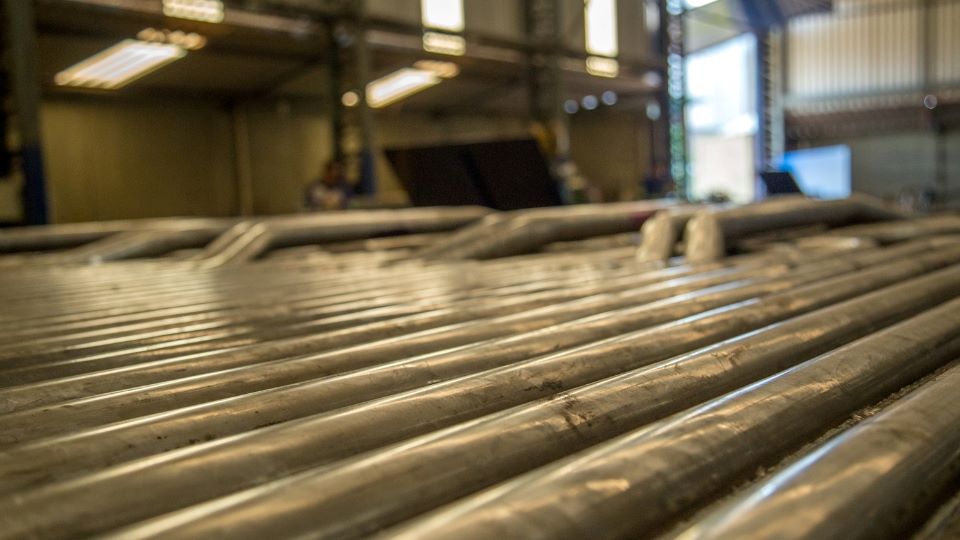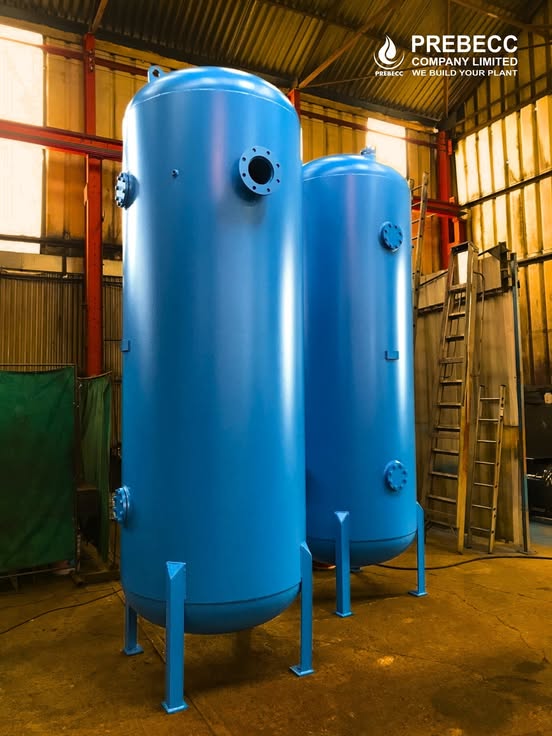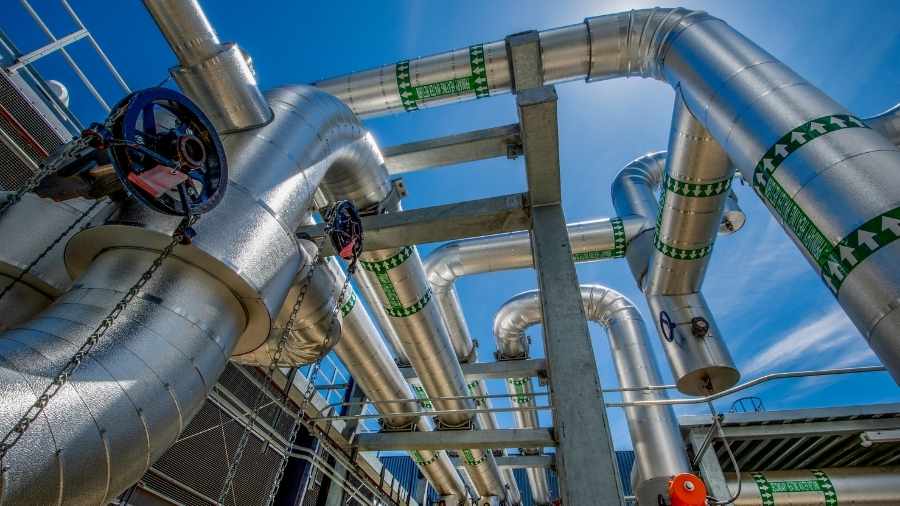Pressure equipment refers to systems or components that operate under high pressure, commonly used in industries such as oil & gas, chemicals, food processing, energy, and manufacturing. These systems must adhere to strict design, fabrication, and inspection standards to ensure safe operation.
According to the European Pressure Equipment Directive (PED 2014/68/EU) and the ASME Boiler & Pressure Vessel Code (ASME BPVC), pressure equipment is defined as vessels, pipelines, boilers, or systems with an operating pressure higher than atmospheric pressure.
1. General characteristics of pressure equipment
1.1. High-pressure resistance
Pressure equipment is specifically designed to function under high-pressure conditions, ranging from a few bars to hundreds or even thousands of bars in specialized applications such as supercritical power generation or high-capacity air compression. Understanding pressure and the factors that influence it is essential for ensuring safety in the design, manufacturing, and operation of pressure equipment.
Definition of Pressure
Pressure is defined as the force applied per unit area, expressed by the formula:
Where:
- P = Pressure (Pa)
- F = Applied Force (N)
- A = Surface Area (m²)
Common Pressure Units
| Unit | Equivalent Value |
|---|---|
| Bar | 1 bar ≈ 100 kPa |
| Psi (Pounds per Square Inch) | 1 psi ≈ 6.895 kPa |
| Kilopascal (kPa) | 1 kPa = 1,000 Pa |
| Megapascal (MPa) | 1 MPa = 1,000 kPa |
In Vietnam, industrial applications commonly use bar or MPa, while psi is widely used in the United States for pressure systems.
Several factors can cause pressure variations inside equipment, including:
- Temperature (T): According to the ideal gas laws (Boyle-Mariotte and Gay-Lussac), an increase in temperature leads to a proportional increase in pressure within a confined space. This is particularly critical in compressed gas storage tanks or high-temperature processing systems.
- Volume (V): In a closed system, reducing the available volume results in a pressure increase, as described by Boyle’s Law. To prevent overpressure failure, pressure vessels are designed with appropriate expansion tolerances.
- External Forces: Mechanical vibrations, impact loads, and corrosion can also influence internal pressure levels. These factors must be carefully considered during design to ensure the structural integrity and longevity of the equipment.
1.2. Material requirements for pressure equipment
Material selection plays a crucial role in the design and operation of pressure equipment. Given the high-pressure environment, extreme temperatures, and potential corrosion risks, materials must meet strict criteria for mechanical strength, corrosion resistance, and thermal stability.
Pressure equipment is subject to internal stresses from internal pressure and external mechanical forces. Therefore, selected materials must have the following properties:
- High Tensile Strength: Ability to withstand significant tensile forces without failure.
- Yield Strength: The ability to endure plastic deformation under load before losing elasticity.
- Ductility: The capacity to deform without becoming brittle and breaking, reducing the risk of cracks under varying loads.
- Impact Toughness: Resistance to cracking under impact loads or sudden temperature changes.

1.3. Complex load design in pressure equipment
Pressure equipment must withstand multiple simultaneous loads, which affect its durability and operational safety.
Internal pressure generates tensile stress on the equipment walls, while external pressure can cause structural instability, potentially leading to collapse if not properly designed. Temperature fluctuations also pose a challenge, as uneven thermal expansion can result in warping or cracking—especially in low-temperature applications where materials may become brittle.
Additionally, dynamic loads caused by pressure fluctuations, vortex-induced vibrations, or mechanical oscillations increase the risk of material fatigue, leading to microcracks and, ultimately, severe failure. Chemical corrosion further deteriorates material integrity over time, particularly in environments containing aggressive chemicals or saline steam.
Moreover, environmental factors such as strong winds, earthquakes, or ocean waves can induce vibrations, deformation, or structural instability. As a result, pressure equipment must be designed to withstand these conditions while maintaining safety in all operational scenarios.
1.4. Stringent safety and inspection requirements
Due to the high-pressure operating conditions, pressure equipment must comply with strict safety standards such as ASME Section VIII, API 510, EN 13445, and TCVN 8366:2010. The design, manufacturing, and operation of these systems must meet rigorous technical requirements to prevent risks of explosions, leaks, or long-term structural degradation.
Before commissioning, pressure equipment undergoes stringent quality testing. Hydrostatic testing is commonly used to verify the integrity and pressure resistance of the system by filling it with water at a pressure higher than its working pressure. Non-destructive testing (NDT) techniques, including ultrasonic testing (UT), radiographic testing (RT), magnetic particle testing (MT), and liquid penetrant testing (PT), help detect internal defects in materials, welds, and surfaces.
During operation, periodic inspections are essential to detect signs of degradation caused by corrosion, material fatigue, or overloading. These inspections typically involve measuring wall thickness, assessing residual stress, and verifying the performance of safety valves to ensure the equipment remains in optimal working condition, minimizing the risk of failure.
2. Classification of pressure equipment
Based on function and operating conditions, pressure equipment is classified into the following categories:
2.1. Pressure Vessels
Pressure vessels are designed to store and transport liquids or gases at pressures higher than atmospheric pressure. They can be categorized into:
- Compressed Gas Vessels: Used for storing high-pressure gases such as oxygen, nitrogen, hydrogen, and CO₂.
- LPG/LNG Storage Tanks: Contain liquefied gases like propane, butane, and ammonia for industrial and domestic applications.
- Reactor Vessels: Utilized in the chemical industry for conducting high-pressure chemical reactions.

2.2. Boilers
Boilers are pressure equipment used to generate steam at high temperature and pressure, commonly applied in power generation, food processing, and industrial manufacturing. Some common types include:
- Fire-tube Boilers: Heat is transferred from combustion gases inside tubes surrounded by water, producing steam.
- Water-tube Boilers: Water flows inside tubes while combustion occurs externally, allowing for higher steam pressure.
- Circulating Fluidized Bed (CFB) Boilers: Use fluidized bed technology for efficient fuel combustion and reduced emissions.
2.3. Pressure Piping Systems
Pressure piping systems transport high-pressure gases or liquids and are governed by standards such as ASME B31.3 (Process Piping) and ASME B31.1 (Power Piping). These systems include:
- Steam Piping: Used in power plants and boiler systems.
- Oil & Gas Pipelines: Transport compressed gases, LNG, LPG, and crude oil in extraction and distribution networks.
- Hydraulic Systems: Provide high-pressure fluid flow for industrial machinery and hydraulic systems.

2.4. Heat Exchangers
Heat exchangers are pressure equipment designed to transfer heat between two mediums with different temperatures, widely used in oil & gas, chemical, and food industries. Common types include:
- Shell & Tube Heat Exchangers
- Plate Heat Exchangers
- Air-cooled Heat Exchangers

CONTACT PREBECC FOR YOUR PROJECT
Email: info@prebecc.com
Hotline: (+84) 7 08 09 1033
